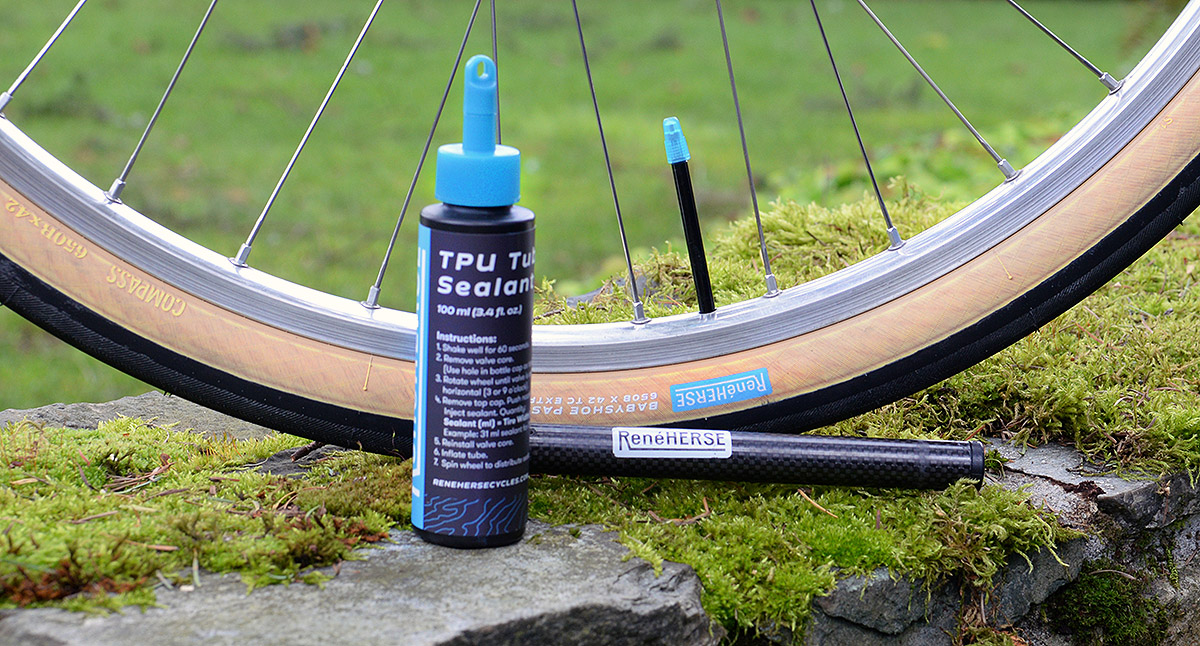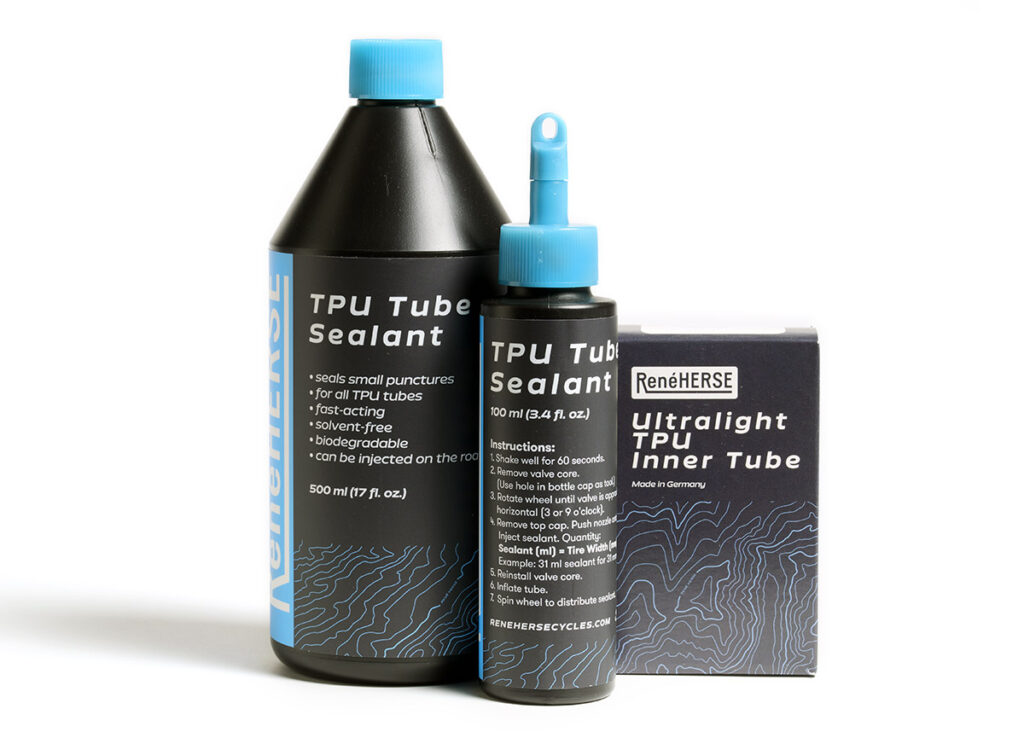Rene Herse Introduces TPU Tube Sealant
Tubeless or TPU tubes? Cyclists choose tubeless setups mainly for one reason: The sealant inside the tire seals small punctures caused by glass shards and tiny steel wires. (For mountain biking, a reduction of pinch flats is even more important. For road and most gravel cycling, wide tires have made pinch flats less of an issue.)
What if we could eliminate those flats without the difficult setup of tubeless tires, without the need to replenish sealant, and without the speed penalty due to liquid sealant sloshing around inside our tires?
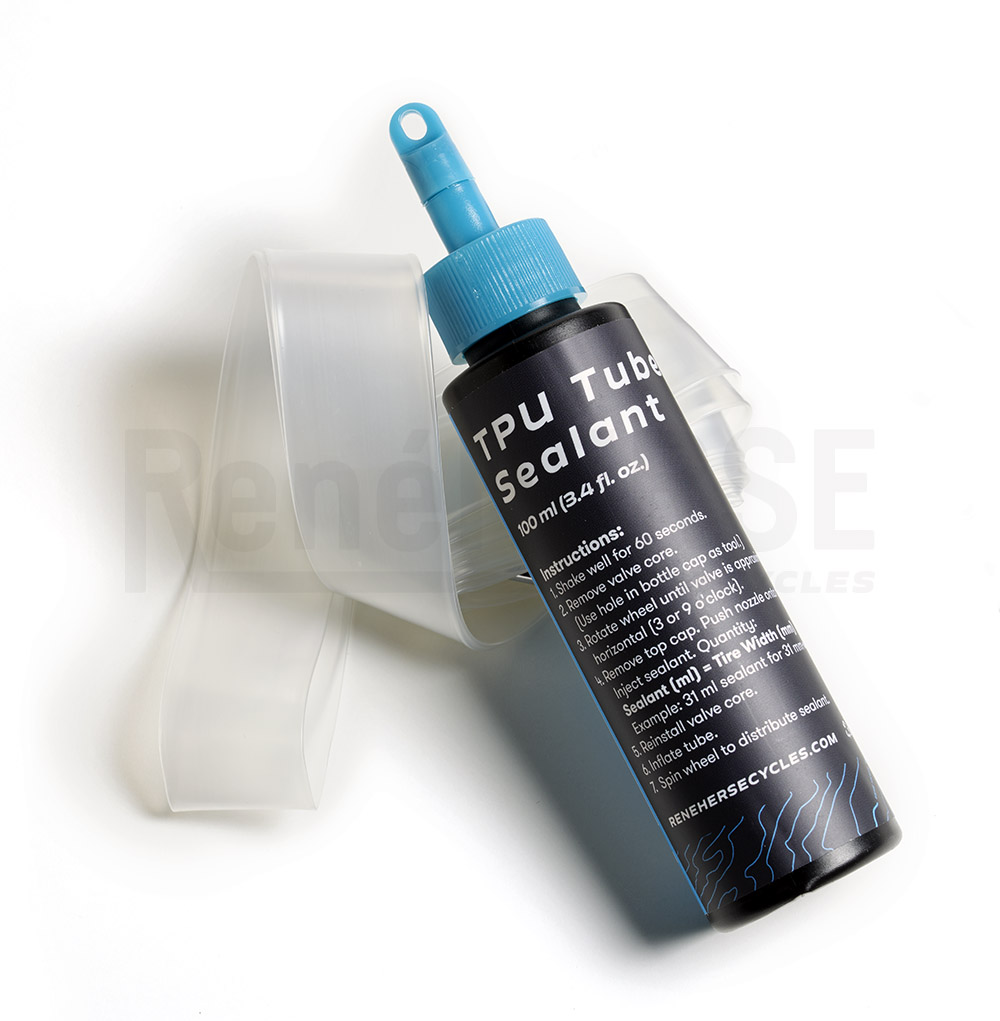
That’s the idea behind the new Rene Herse TPU Tube Sealant. It’s specially formulated to seal small punctures in TPU tubes, just like tubeless sealant does for tubeless tires. Since the sealant is inside the TPU tube, it lasts a long time before it needs to be replenished. The sealant only needs to seal punctures—and not the entire tire/rim interface—so you need much less sealant than you would for a tubeless setup—which means less weight and less resistance. Use this formula:
Tire width (mm) = Sealant (ml)
Example: For 38 mm tires, use 38 ml of sealant.
Most riders will add the sealant before they install the tube. Just remove the valve core and inject the sealant.
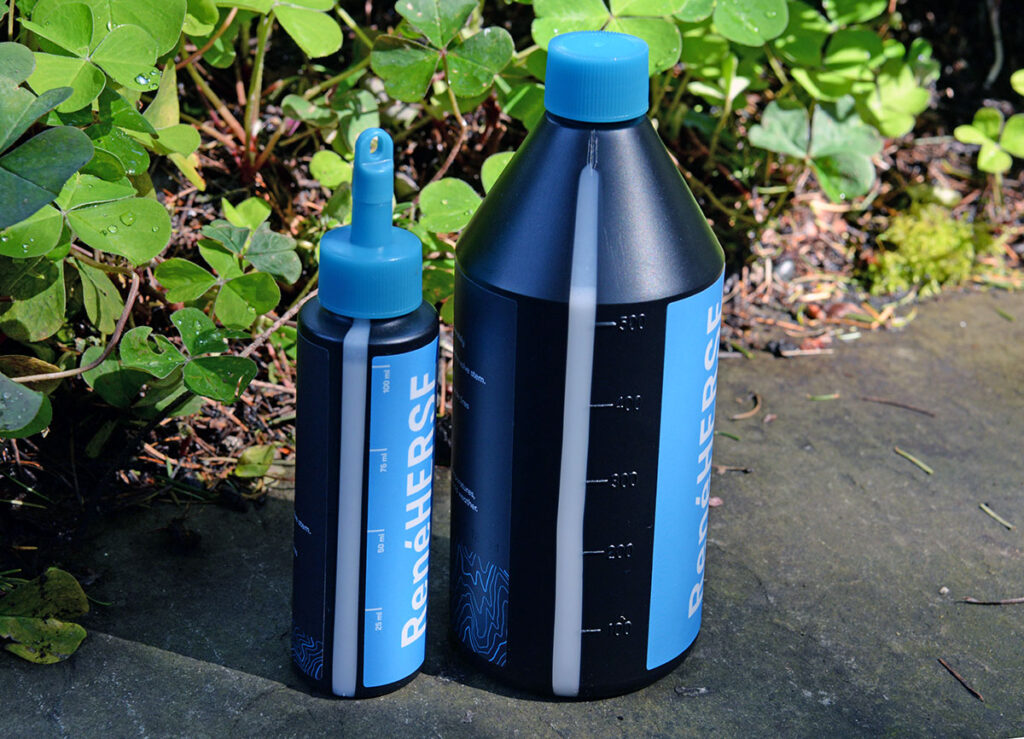
The TPU sealant is available in a 100 ml (3.4 oz.) bottle and in an economical 500 ml (17 oz.) bottle. The 100 ml bottle makes it easy to inject the sealant into the tube, without additional tools: The cap has a built-in valve core tool, and the nozzle fits onto the valve stem. You can inject the sealant directly from the bottle into the tube. A clear strip with gradations on the side of the bottle makes it easy to keep an eye on how much sealant you’ve injected.
Why doesn’t the 500 ml bottle come with the handy nozzle and the cap with built-in valve core tool? The 500 ml bottle is simply too big to fit between the spokes of your wheel. Use it to refill the 100 ml bottle, or use a standard injector for tubeless sealant to get the sealant into the TPU tube.
You can also use the 100 ml bottle to inject sealant on the road. That way, you can run your tubes without sealant for the ultimate in speed. (Any liquid inside your tires will slow you down a bit.) That’s what I plan to do for races, FKTs and timed rides like Paris-Brest-Paris. In the unlikely event of a flat, I’ll just inject TPU sealant, inflate the tire, and continue—without even removing the wheel.
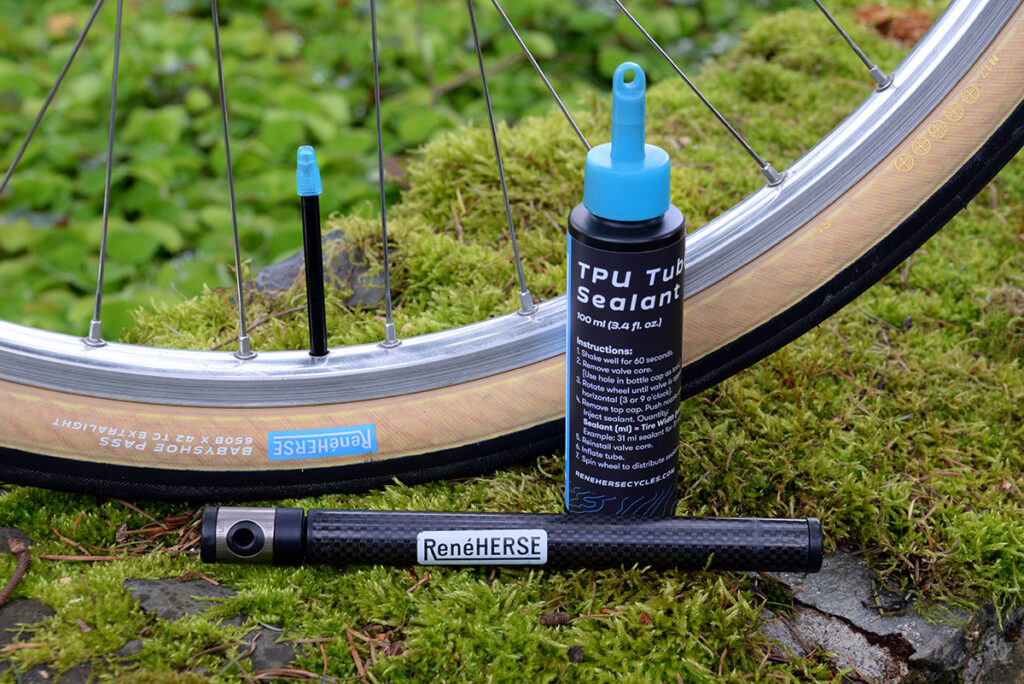
Here is how it works: All you need is the TPU Sealant bottle and a pump—both are easy to carry on the road.
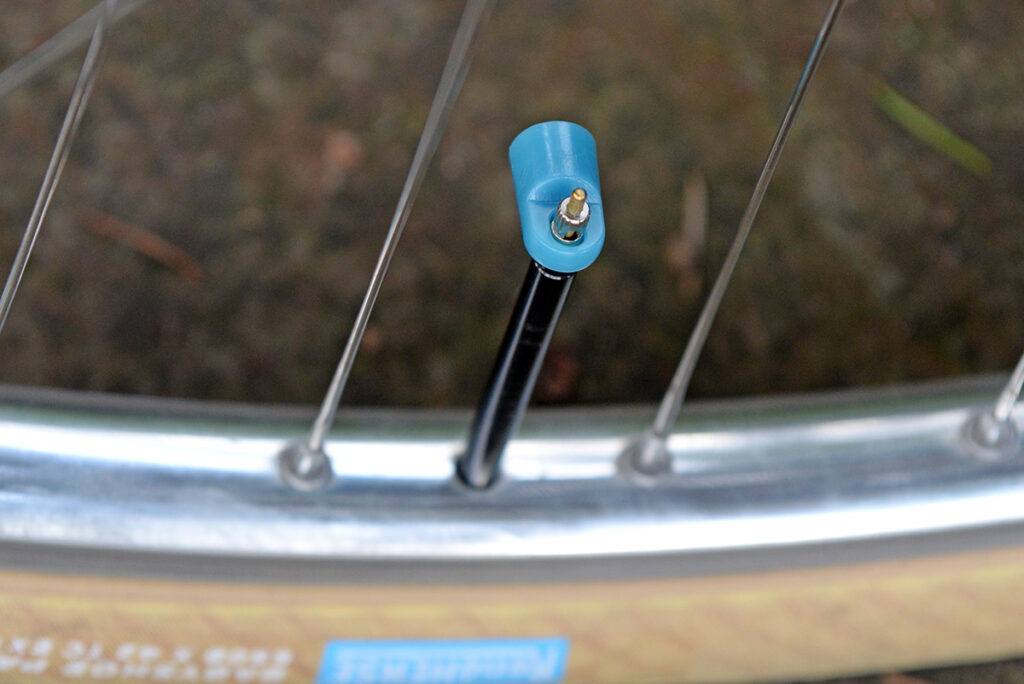
- Check the tire to make sure there isn’t major damage that caused the flat—like a big nail stuck in the tread.
- If the leak appears to be due to a small puncture, let out most of the remaining air.
- Use the cap of the TPU sealant bottle to unscrew the valve core.
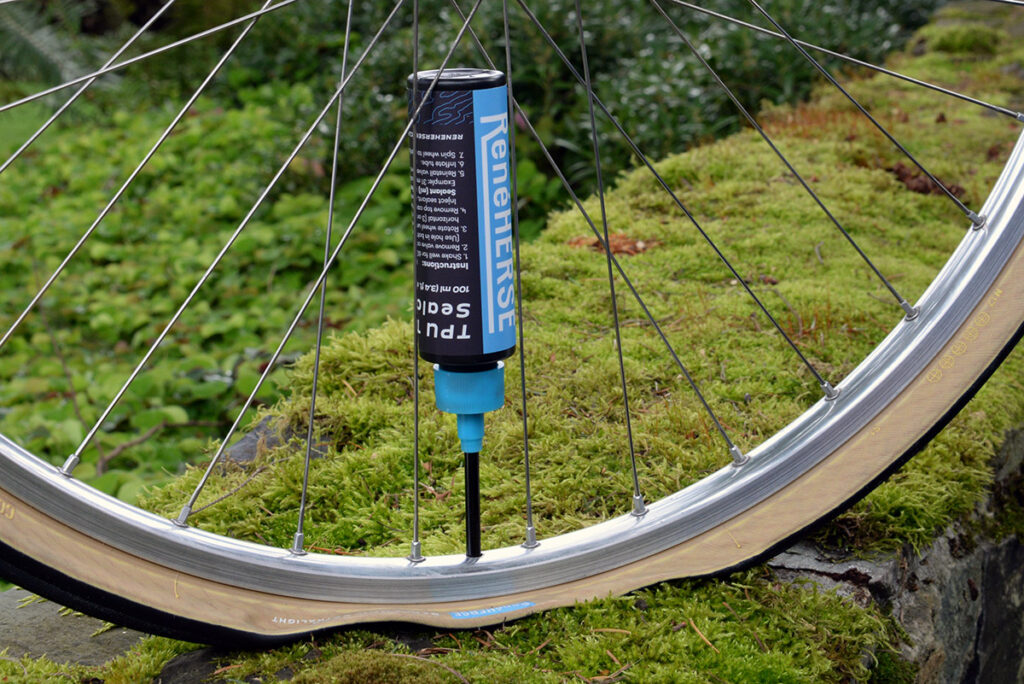
- Push the nozzle of the sealant bottle lid onto the valve core.
- Squeeze the bottle to inject the sealant.
- If you know where the leak is, you’ll need less sealant, since you’ll work the sealant directly into the puncture. About 25 ml is enough in that case. If you can’t find the leak, you’ll want to coat the entire inside of the tube—use the standard formula.
- Reinstall the valve core.
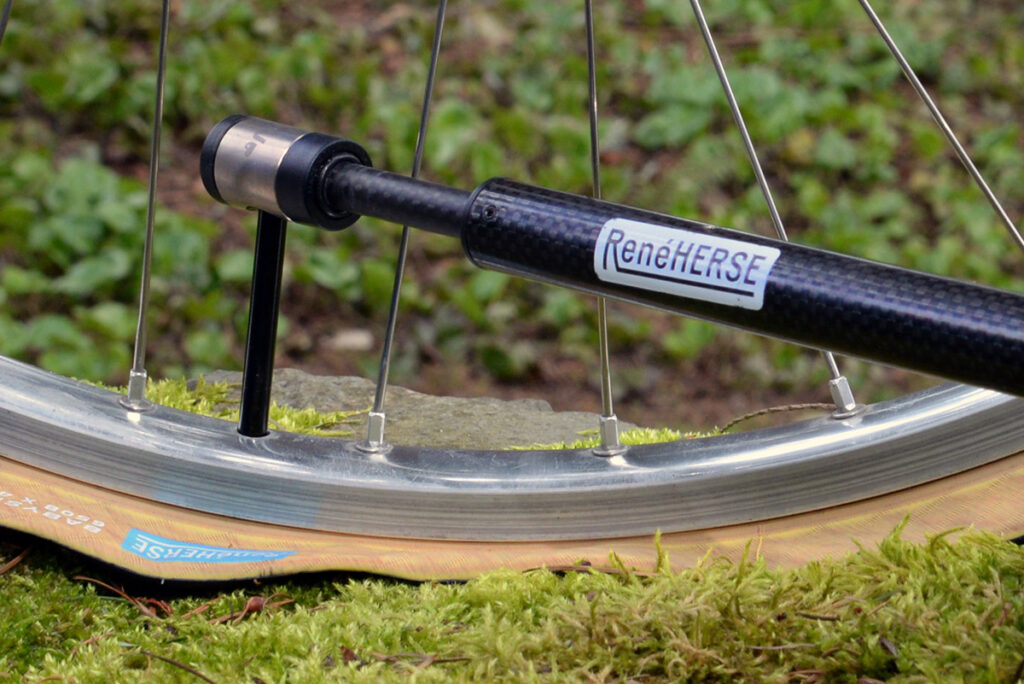
- Inflate the tire.
- Move the tire so the sealant flows into the leak. You’ll hear sealant escape through the puncture. The leak will seal almost immediately.
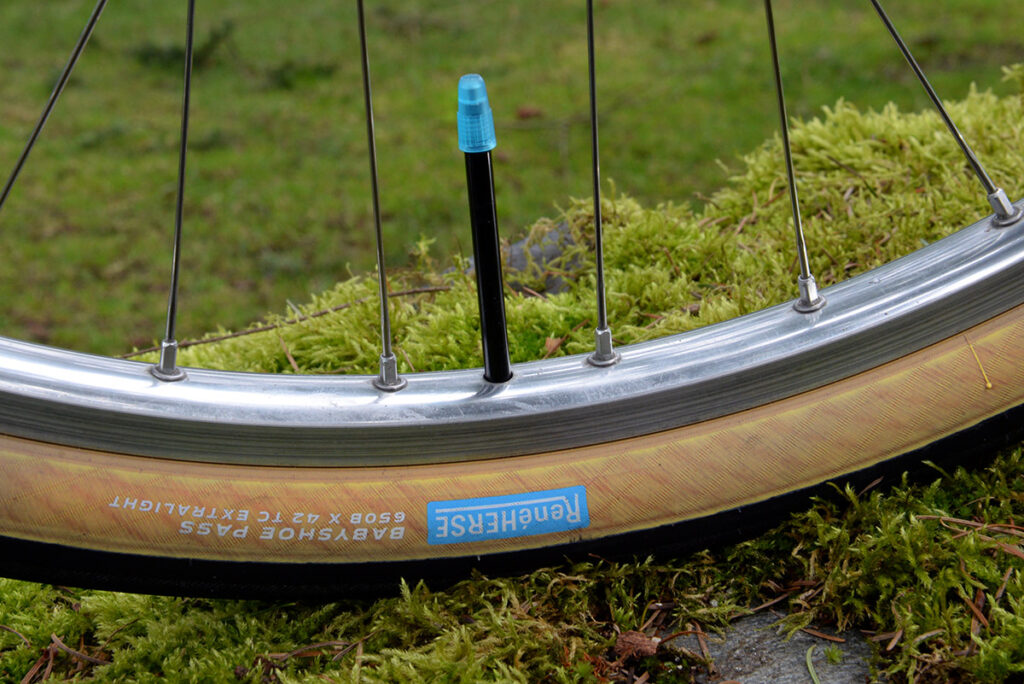
- Ready to go!
Whether you run your TPU tubes with sealant from the get-go or inject it only if you have a flat—the sealant creates a lasting repair of small punctures. We’ve tested it extensively over many months—it really works!
What else is there to know?
- TPU Tube Sealant is now in stock.
- The cap with the integrated valve core tool is only for occasional use. It’s made from plastic and not intended as a shop tool.
- If you spot the debris (glass shard, steel wire) that caused your flat tire, remove it. That way, the debris won’t move around in the tire/tube as the tire rotates. If you can’t find it, that’s usually fine, too. (This applies to tubeless tires, too.)
- We also got another shipment of the TPU tubes themselves. All models are in stock.
- We received our first shipment of TPU Tube Sealant just before new tariffs were announced. Prices are likely to increase when this shipment sells out.


